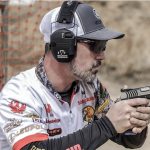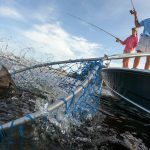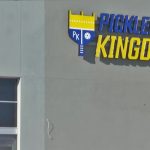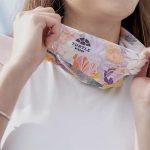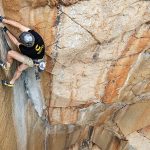Head N.V. announced net sales for the three months ended December 31, 2002 increased 6% to $ 135.8 million. Net income was 15% lower at $8.4 million. Net income, prior to tax and excluding foreign exchange gains and losses increased by 32% to $13.5 million.
Net sales for the full-year 2002 declined 1% to $387.5 million, while the company posted a net loss of $2.6 million compared to net income of $9.4 million in 2001.
Net income, prior to tax and excluding foreign exchange gains and losses decreased by 3% to $7.4 million.
Johan Eliasch, Chairman and CEO, commented: “We finished the year as we had expected. Overall sales and margins were slightly behind those of last year as market conditions continued to be tough. Head is, however, competing effectively in its markets and continues to launch innovative new products whilst focusing on reducing the cost base of the business.
“In light of the current political and economic situation the outlook for 2003 is uncertain. Trading conditions remain difficult, and provided there is no further deterioration in our key markets, we are planning for both sales and profits to be in line or slightly below with those achieved in 2002.”
Revenues
For the Three Months Ended For the 12 Months Ended
December 31, December 31,
2001 2002 % 2001 2002 %
(unaudited) (unaudited) Change (unaudited) (unaudited) Change
(in thousands) (in thousands)
Product
Category
Winter $ 71,798 $ 13.4% $ $ 144,667 6.8%
Sports 81,435 135,421
Racquet 38,924 35,642 -8.4% 180,108 168,822 -6.2%
Sports
Diving 15,118 15,927 5.4% 68,480 65,600 -4.2%
Licensing 2,199 2,760 25.5% 8,012 8,398 4.8%
Total $ 128,039 $ 6.0% $ $ -1.1%
Revenues 135,764 392,021 387,487
For the three-month and the twelve-month periods ended December 2002, our Winter Sport sales increased by 13.4% and 6.8%, respectively compared with the same period in the prior year. The main reason for the increases in sales was the strengthening of the Euro against the U.S$. Excluding the effect of changes in exchange rates, revenues in Winter Sports would have increased by 1.4% for the twelve months.
In addition to the exchange rate impact, the growth experienced in the last quarter of 13.4% should be seen in light of the changing seasonality of our business. With poor early season snow conditions in many key markets in 2002/03, retailers have been delaying ordering decisions, and some sales normally generated in the third quarter were delayed to the fourth quarter.
Underlying the results for the year, there has been a change in the mix of the products being sold. Whilst we increased sales in all our product categories (skis, boots, bindings and snowboards) our snowboards performed particularly well, growing revenues by over 32% in the year. Ski boots growing at 7.8%, and skis growing at 6% also performed well in 2002.
Currency movements combined with the product mix change has impacted the gross margin, reducing it by 570 basis points in the year.
The growth in sales was achieved in a market which we believe has declined by 5%. We believe that this decline was due to two main reasons. The first of these was a lack of snow in the beginning of the 2002/2003 winter season in certain areas of Europe and Eastern North America, and the second the difficult economic environment in the two important markets of Germany and Japan. A lack of snow in the beginning of a given ski season typically affects the number of orders we receive from our customers, as do difficult economic conditions. Our ability to grow sales in tough market conditions is due in part, we believe, to our commitment to technology. For example, during 2002 Head launched the revolutionary Intelligence ski, which won the Ski Magazine innovation prize for 2002 and has been the subject of a great deal of publicity in the industry. These innovative products, are now being used by Head sponsored race teams, and we are delighted to report that we have already had a number of medal wins including Buchel with a 1st in the Super G at Garmisch-Partenkirchen, Trinkl with a 2nd in the downhill at Lake Louise, Buchel with a 2nd and Trinkl with a 3rd in the Super G at Beaver Creek, and Kroll with a 2nd in the downhill at Val dIsere. The Winter Sports Division has had a good start to 2003 with retail sales having recovered in the second half of January and reorder levels currently higher than last year’s levels.
For the year ended December 2002, sales declined by 6.8%. This was due primarily to our decision in 2001 to convert footwear to a licensed product. This decline was however, partly offset by the inclusion for the first time of sports bag revenue in the U.K. in 2002, as bag revenue was a licensed product in previous years. Sales of Penn balls remained flat compared with last year, and racquet sales were down by 4%. Excluding the effect of changes in exchange rates, sales for the full-year declined by 7.8%.
After experiencing some growth in 1999 and 2000, the market for tennis racquets and tennis balls was generally perceived to have declined in 2002 by approximately 5% and 2%, respectively. This, we believe, was due to a decline in the number of recreational tennis players, poor weather conditions in certain key industry markets during the peak selling season and consumer reaction to a slowing economy. We nevertheless maintained our strong position in the racquet sports market over the last twelve months, with our new line of innovative Head Intelligence racquets remaining the most widely sold type of racquet incorporating new power-enhancing and vibration dampening technology.
Despite the adverse impact of exchange rate movements on our gross margin, we have managed to increase it by 310 basis points through improved manufacturing efficiencies in our Penn facilities, and the conversion of footwear to a licensed product.
We are pleased to report that our players are on fine form, with Andre Agassi winning the Australian Open for the fourth time in an all Head final against Rainer Schuttler. At the Australian Open, Head racquets were used by 31% of the 128 men competing.
For the year ended December 2002, diving product revenues decreased by 4.2%. Excluding the effect of changes in exchange rates, sales for the full-year declined by 7%. Some improvement was noted in the last quarter of 2002 when sales increased by 5.4% compared to the last quarter of 2001. It should however be noted that the last quarter of 2001 was particularly affected by the events of September 11, and we have not noticed any underlying improvements in the market in the last few months.
The overall market for diving equipment is generally perceived to have declined by 10% in 2002 from 2001, with the important U.S. and Japanese markets showing, according to some estimates, a downturn in demand of up to 20%. This overall decline was, we believe, principally due to the general worldwide economic slowdown and a consequent decrease in the number of the end users of diving products travelling on holiday to diving and other resorts. Only certain markets in areas such as South East Asia and Eastern Europe showed some improvement generally across the industry in 2002.
In these difficult markets, however, we continue to develop new products and to win awards — most recently the Dive_Oz gold star award for the Mares X-Vision mask and the Tauchen Diving Magazine award for the best B.C. vest.
Licensing revenues grew by 4.8% in the year to December 2002 compared to the prior year. The division has been affected by two changes: sports bags started being sold directly by our U.K. subsidiary and footwear products were licensed to a third party. Both of these changes took place at the beginning of 2002.
The results for the final quarter of 2002 showed an increase in sales of 25.5% over the comparable period in the prior year. This was due principally to timing differences on receipt of income from licensees.
For the year to December 31, 2002, due to lower revenues and margins, gross profit decreased by $4.0 million to $154.1 million from $158.1 million in the prior year.
Gross margins reduced by 50 basis points due mainly to the strengthening of the Euro, and some margin erosion in the winter sports due to product mix changes. Margins improved in the racquet sports and the diving division.
For the year ended December 31, 2002, selling and marketing expenses increased by $0.5 million, or 0.5%, to $102.6 million from $102.1 million in the prior year. Excluding the effect of changes in exchange rates, selling and marketing expenses decreased by 2.4% due primarily to significantly lower advertising expenses and lower reserves for warranties due to good product performance. These decreases were in part off set by planned increased selling costs as a result of our new distribution unit in the U.K.
For the year ended December 31, 2002, general and administrative expenses decreased by $1.9 million, or 5.6%, to $32.1 million from $34.0 million in the prior year. This was due to lower amortisation costs of $1.0 million as a result of changes in accounting standards, and the impact of cost savings throughout the group.
We recorded a non-cash compensation expense of $1.6 million in the year to December 2002 compared to a charge of $2.0 million in the prior year. These expenses arose due to the amortization of the non-cash cost associated with the grant of stock options under our 1998 and 2001 plans.
For the year to December 2002, operating income decreased by $1.4 million to $17.8 million from $19.1 million in the year to December 2001.
The negative net income for the year to December 2002 is a result of the large foreign exchange loss generated in the year as the Euro strengthened against the U.S. Dollar. The loss was primarily created due to the recognition under U.S. accounting standards of foreign exchange gains and losses associated with the company’s U.S dollar denominated receivables of the company’s European subsidiaries.
Cash flow from operations for the year at $23.3 million includes $6.9 million of cash released as a result of tighter control over working capital. The cash generated in the year was invested in the business and also used to repurchase $4.1 million of Head common shares and to pay the 2001 dividend of $5.2 million.
Consolidated Results
For the Three For the twelve Months
Months Ended Ended December 31
December 31,
2001 2002 2001 2002
(in thousands)
REVENUES
Total $ 128,039 $ 135,764 $ 392,021 $ 387,487
revenues
Cost of 76,523 83,301 233,971 233,402
sales
Gross 51,516 52,463 158,050 154,084
profit
Gross 40.2% 38.6% 40.3% 39.8%
margin
Selling & marketing 27,696 27,477 102,094 102,619
expense
General & administrative 9,909 8,671 34,810 32,081
expense (excl. non-cash
compensation
expense)
Non-cash compensation 515 407 2,025 1,632
expense
Operating 13,396 15,908 19.121 17,753
income
Interest (2,903) (3,007) (11,275) (11,677)
expense
Interest 133 394 892 940
income
Foreign exchange 1,030 (2,870) 5,828 (7,387)
gain/(loss
Other income/(expense), 129 218 7 387
net
Income (loss) from 11,785 10,643 14,573 15
continuing operations
before income taxes
Income tax expense (1,380) (2,282) (4,032) (2,630)
Share of loss from equity (523) (1,117)
investment, net of tax
Net $ 9,881 $ 8,361 $ 9,424 $ (2,615)
income/(loss)

